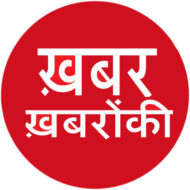
The Indian Banking Sector: Is the Good Run Coming to an End?
FY2023 saw atypical conflux of factors all of which resulted in extraordinary performance for Indian banks, after a prolonged phase of banking sector woes.The road ahead seems bumpier
Ira Singh
10 June’23
Over the past few years, the Indian banking sector has faced several significant challenges that have tested its resilience. One of the major issues is the rising non-performing assets (NPAs) or bad loans, which have put a strain on the financial health of many banks. These NPAs are primarily a result of factors such as economic slowdown, policy uncertainties, and governance issues, leading to a deterioration in the asset quality of banks.Additionally, regulatory reforms and stricter compliance requirements have put pressure on the banking sector. The introduction of the Insolvency and Bankruptcy Code (IBC) in 2016 was a significant step towards resolving the NPA issue, but the implementation process has faced challenges, resulting in delays and legal bottlenecks
Furthermore, the economic impact of the COVID-19 pandemic has posed unprecedented challenges to the banking sector.
Contrary to expectations this sector remained relatively unscathed by the pandemic, and proved to be quite resilient. In fact, FY2023 turned out to be a good year for Indian banks. Several banks declared record profits in their annual results, banking stocks rallied and there is a general sense of optimism about the banking sector. However, the way forward seems less optimistic and ridden with several challenges.
To understand why, we need to look at the factors that have driven the current performance of the banking sector and analyse the reasons behind these factors not working favourably in the future.
Market Synopsis, as per official records
First, between May 2022 and May 2023, the RBI steadily increased the repo rate by 2.5 percent from 4 percent to 6.5 percent in order to bring inflation down. In 2018, Indian banks had adopted external benchmark-based loan pricing as a result of which roughly 45 percent of the total loan book is now linked to an external benchmark, repo rate being the most popular one. Hence, the increases in the policy rate in FY2023 got rapidly transmitted to bank loans. Across the banking sector, the increase in loan pricing ranged from 125 to 175 basis points, depending on the composition of banks’ loan book. On the deposit side, however, the transmission was more modest, between 60 and 100 basis points. This means that banks’ net interest margins widened considerably resulting in higher profits.
Monetary transmission has always been asymmetric in India with deposits getting repriced with a lag relative to loans.In this context, it is also important to note that in FY2023, total bank credit outgrew deposits by about Rs 2 trillion creating the biggest deposit-credit growth gap in the history of Indian banking.
Second, it seems increasingly likely that we are at the end of the monetary tightening cycle. With inflation cooling off, the RBI is unlikely to raise rates any further unless there are some unexpected shocks to inflation such as deficient monsoons, etc. They may however hold the rates at the current level for a prolonged period of time given that inflation still has not hit the 4 percent target. This means that banks will not be able to push up loan pricing any further and the scope for margins to grow is therefore limited.
Third, one factor that contributed to bank profitability in FY2023 was the remarkable uptake in credit growth. It peaked at roughly 18 percent in the first half of the year and cooled down to about 12 percent by the end of the last quarter. For the entire year, the credit growth was around 15 percent, the highest in more than a decade. This strong growth was largely driven by MSME credit growing at 16 percent and consumer credit which grew at 20 percent. On the other hand, credit to large corporations remained lacklustre and grew at merely 3 percent.
The sharp surge in MSME credit was primarily due to the credit guarantee scheme introduced by the government in the wake of the pandemic in order to support this particular sector. This implies that whether MSME credit will continue to grow in future is critically contingent upon the government extending its scheme. Moreover, in Q4 of FY2023, overall credit growth began decelerating. The trend has been especially pronounced for consumer credit as rising interest rates finally began impacting credit demand, suggesting slower credit growth in the coming quarters and hence potential reduction in bank margins.
Also,another challenge faced by the banking sector is the emergence of digital disruption and increasing competition from fintech companies.
In conclusion,while the Indian banking sector faces various challenges that have raised concerns about its future performance,it is premature to conclude that the good run of the sector is over.The sector had shown resilience and adaptability in the past,and efforts are underway to address the existing issues.With continued reforms, technological advancements and a recovering economy, the Indian banking sector has the potential to overcome it’s challenges and continue its growth trajectory in the long run, though the road ahead seems bumpier with credit growth showing signs of a slowdown, and bank margins peaking and almost certain to decline. Moreover, growth in the Indian economy as a whole is expected to slow down in FY2024 owing to significant global headwinds. It will be interesting to see how the banking sector manoeuvres through this phase.
